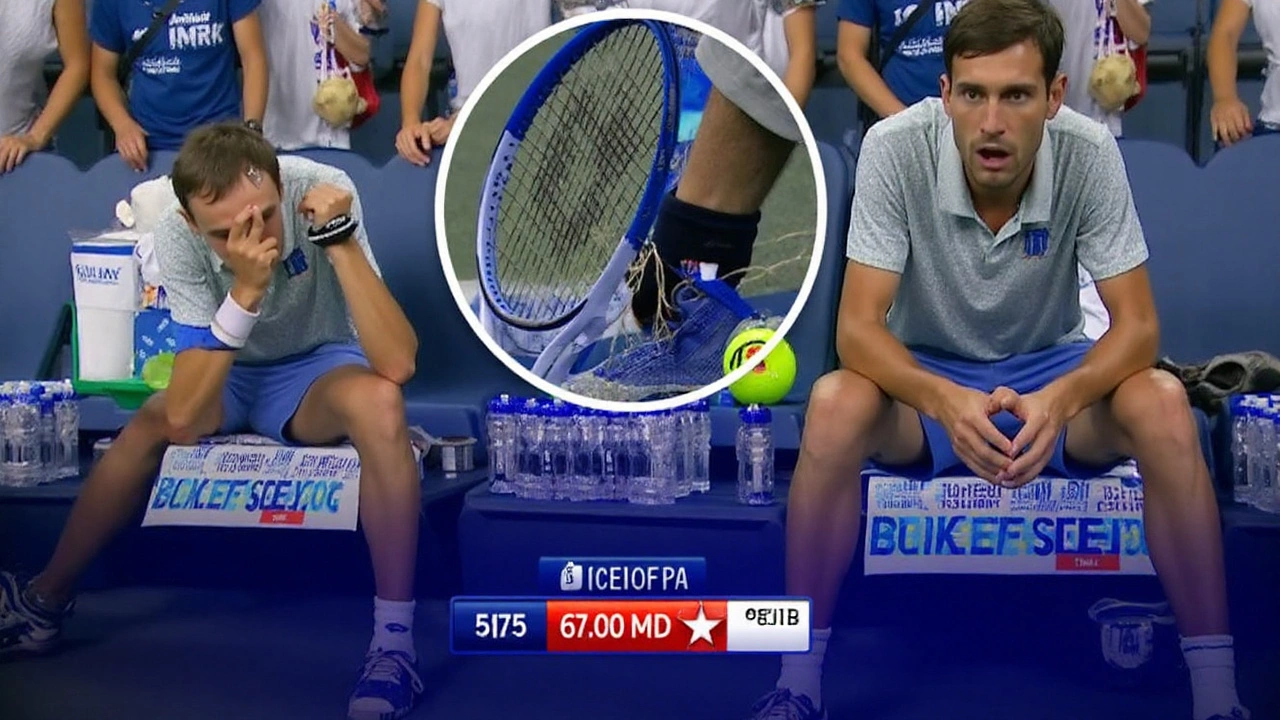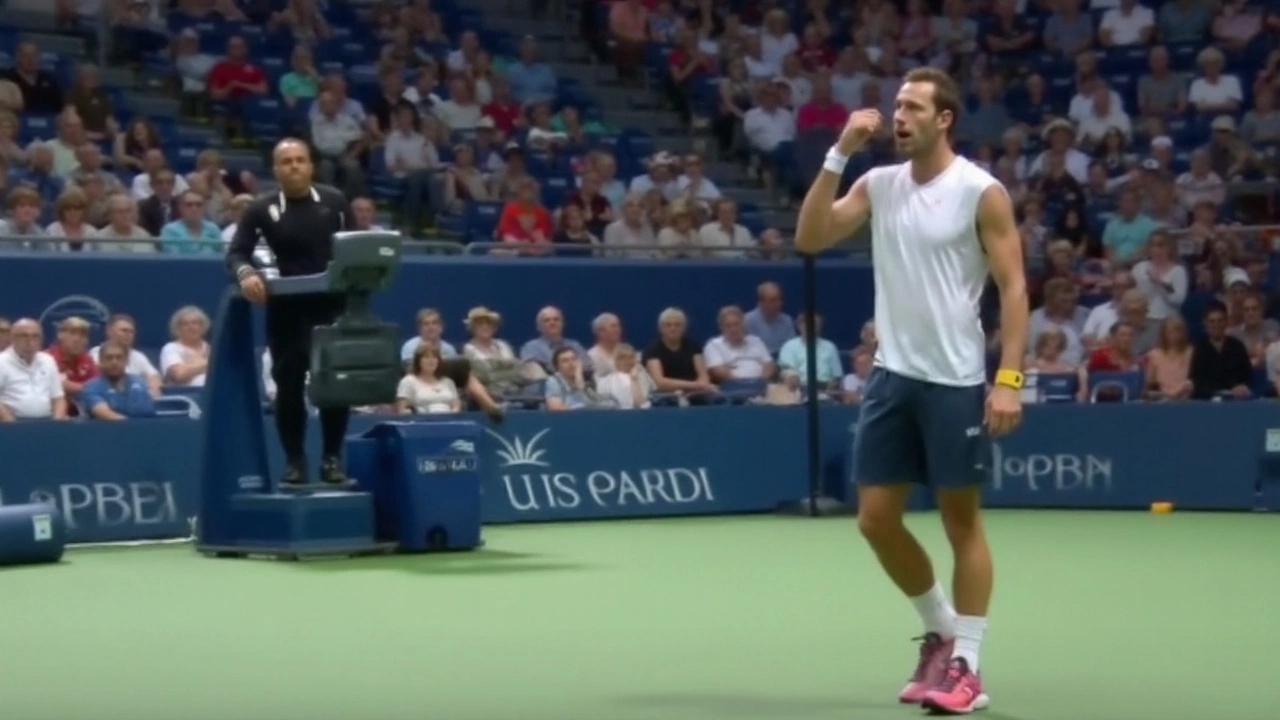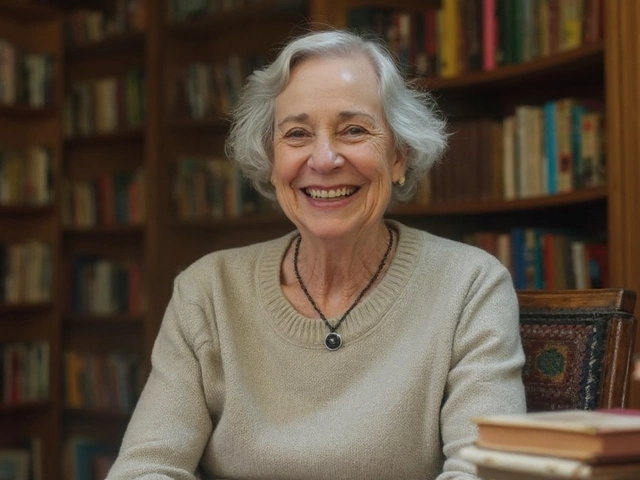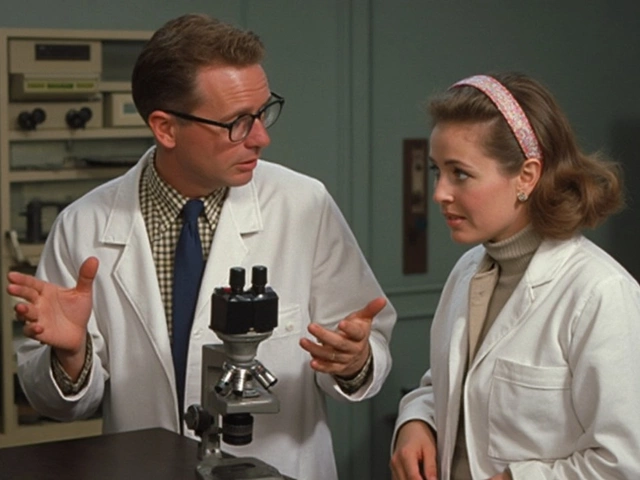Daniil Medvedev US Open chaos as photographer halts match and sparks meltdown
Chaos at Louis Armstrong: How a Photographer Stopped Play
A match point at the US Open is supposed to be tense. It isn’t supposed to involve a photographer walking onto the court. Yet that’s exactly what happened at Louis Armstrong Stadium on Sunday night, blowing up a first-round match between Daniil Medvedev and France’s Benjamin Bonzi and turning it into one of those New York scenes people talk about for years.
The flashpoint came at 5-4 in the third set with Bonzi serving for the match. As he bounced the ball, a photographer stepped past the baseline to get the shot. Chair umpire Greg Allensworth immediately stopped play, told the photographer to leave, and—following standard procedure for an outside interruption—granted Bonzi another first serve. That ruling detonated Medvedev’s temper.
The No. 13 seed, already hanging by a thread, unloaded on the chair. He shouted questions about the decision, tossed his arms in disbelief, and then took his frustration out on his racquet, hammering it into the court and the bench. The noise drew a roar from the New York crowd, which Medvedev then leaned into, waving his arms and effectively asking for more.
Armstrong answered. The booing swelled into a wall of sound, the kind that drowns out a ball toss. Play stopped for more than six minutes while officials tried to cool the situation and reset the atmosphere. When order returned, the tenor of the night had changed. The tennis was no longer just about forehands and serves. It was about control—of emotions, of the crowd, of the moment.
Bonzi, who had been the calmest person in the stadium, stayed steady through the disruption. He stuck to his routines, kept his body language quiet, and went back to work. Medvedev, by contrast, never fully got the wheel back. Though he clawed the match into a fifth set with a burst of stubborn brilliance, the damage was done.
The final line told a twisty story: Bonzi beat Medvedev 6-3, 7-5, 6-7(5), 0-6, 6-4. Momentum swung wildly. Bonzi led by two sets, failed to close in a tiebreak, and then absorbed a love set drubbing as Medvedev surged. But in the decider, the Frenchman shut the door with clean service games and just enough firepower on return to break once and hold his nerve to the finish.
Former US Open champion Andy Roddick, working the broadcast, summed it up with a shrug only a New Yorker could love: “This is just Meddy being Meddy,” he said, pointing back to 2019, when Medvedev feuded with the crowd early and somehow won them over by the end. The subtext was clear—New York and Medvedev have history.
Security guided the photographer off the court quickly after the intrusion, but the fallout lingered. For a player like Medvedev—meticulous about rhythm, fueled by edge—the interruption and the subsequent call were gasoline on a live wire. He saw a match point scenario reset. The umpire saw a textbook outside hindrance and a let. In the moment, neither side was going to budge.
New York’s tennis fans are loud and loyal and, at times, happily chaotic. That edge gives the US Open its personality. It also puts umpires and players in tight spots. On Armstrong, sound ricochets differently than on Arthur Ashe Stadium, and a crowd that wants to be heard can become the loudest force in the building. On a night charged by an uninvited guest and a combustible star, that force took over.
For Bonzi, this was the win of his Grand Slam life. Unseeded and outside the spotlight, he outplayed a former world No. 1 who won this tournament in 2021 and reached another final since. Bonzi didn’t need flash. He needed resolve. He served with discipline, returned on balance, and kept his head when the temperature spiked. Plenty of players fade once a lead slips and the favorite roars back. He didn’t.
Medvedev, for his part, left with one of the more jarring first-round losses of his career. Seeded 13 here, he came in with expectations to make a week-two push. Instead, he exits on night one, the lasting image a broken racquet and a player yelling toward the chair and the stands.
What exactly was the rule at issue? Under the Grand Slam and ITF codes, when an outside disturbance interrupts play—something neither player caused—the chair can call a let. If the point hasn’t properly begun or if the interruption materially affects the server’s motion, the server can get a first serve again. That’s what Allensworth applied. It may not have felt fair to the player under siege, but the handbook backed the call.
There’s a second layer, too. Code violations can stack up fast in a scene like that: racquet abuse, audible obscenity, unsportsmanlike conduct. Fines typically follow, though the amounts vary and often post later in the week. Given the racquet smashing and the crowd incitement, Medvedev could be hearing from the tournament referee’s office.
The photographer’s decision raises another point: access and proximity. The US Open has tightened on-court media rules over the years, but Armstrong is intimate compared to Ashe, and the angles are tighter. Most photographers work from designated pits and are trained on movement protocols. One misstep in a pressure moment can tilt a match and, as we saw, set off a chain reaction no one wanted.
Medvedev’s relationship with New York has always been complicated. In 2019, he was the villain for a week—mocking gestures, long boos, and then a pivot as his game earned respect. In 2021, he played near-perfect tennis to stop Novak Djokovic’s run at a calendar-year Slam. His game translates on these courts: flat missiles off both wings, deep returns, and a serve that paints lines. But that same edge can spill over when friction rises.
The scoreline showed the split personality of his night. The fourth set bagel was a reminder of how quickly he can take control when he locks in. The fifth set was a reminder of how cruel tennis can be when focus wobbles against an opponent who won’t blink. Bonzi didn’t play scared, even after the storm. He played simple and brave, and that was enough.
This all unfolded on the same night Arthur Ashe Stadium watched 19-year-old Learner Tien swing freely at Djokovic for a set and a half before the 24-time major winner pulled rank, 6-1, 7-6(3), 6-2. Normally, that’s the headline. Not this time. The off-script moment on Armstrong stole the oxygen.
From a tournament standpoint, there will be questions. Do you adjust media positioning during match points? Do you add another layer of rope or marshal guidance on the smaller show courts at night sessions? These are small details—until they aren’t.
There’s also the officiating angle. Allensworth followed the book, but the optics were always going to be messy: a second first serve at match point is a powder keg. Umpires don’t coach optics; they apply rules. In a perfect world, the decision and the explanation land calmly. Armstrong at 10 p.m. is not a perfect world.
Could the outcome have changed without the interruption? Maybe, maybe not. Bonzi had earned the lead and the right to serve it out. Medvedev had been pressing and finding his range. The intrusion didn’t decide the match, but it did shape the mood and the momentum. That’s the risk with any external shock—the tennis restarts, but the emotions don’t reset on command.
Credit to Bonzi for how he managed the moments after the delay. He didn’t rush to the line. He didn’t linger, either. He kept the pace, trusted the patterns that got him there, and took the noise out of the exchanges. That’s learned behavior. You don’t get it from a handbook. You get it from the clusters of tough matches on outside courts in February and March when no one is watching.
For Medvedev, the postmortem will focus on energy management. When he settles, he plays chess at 120 miles an hour. When he spirals, he burns fuel he later needs to win ugly in the fifth. The night had a bit of both. The lesson will sting because the opportunity was there after he turned the tide in the fourth.
What’s next? Bonzi moves into the second round with a confidence spike and a story he’ll tell forever. He just took out a US Open champion on one of the sport’s biggest stages. His reward is a quick turnaround and a scouting report for an opponent who knows he’s dangerous. Medvedev faces the other side of the draw: rest, reflection, and, likely, a fine notice in his player portal.
If you’re looking for a neat headline, it’s this: an ill-timed step by a photographer lit the fuse, the umpire followed the rulebook, the crowd poured gasoline, and a talented underdog kept his head while a star lost his. The US Open has a way of stripping tennis down to raw nerves and noise. On Sunday night, the noise won—until Benjamin Bonzi did.

The rulebook, the crowd, and the bigger picture
There’s a broader conversation here about how pro tennis handles chaos. The sport’s rules for interference are clear, but the environments aren’t. Night sessions are rowdier. Armstrong’s intimacy is a feature, not a flaw. Fans sit close, and the court feels like a stage. That’s magic on most nights. On a night like this, it’s a stress test.
Could technology help? Not really. This wasn’t about line calls or serve speeds. It was about movement in the wrong place at the wrong time. The solution is logistics: better pre-match briefings for on-court media, clearer no-go zones, and security stationed at choke points late in sets. It sounds fussy until one step turns into a six-minute delay and a global talking point.
As for Medvedev, expect the tournament to review the tape for code violations. Racquet abuse is straightforward. Inciting a crowd is more subjective but still covered under unsportsmanlike conduct. Tennis doesn’t want sanitized arenas. It also can’t have matches hijacked by side shows. Finding that balance is messy, which is why nights like this echo.
New York remembers its villains and its heroes, often the same people on different days. Medvedev has lived both roles here. Bonzi just joined the list of players who walked into the noise and walked out with the win. On Armstrong, that’s a statement. It says you were ready for the sport and the city. Not everyone is, even when they’ve lifted this trophy before.
The tennis calendar won’t pause. By Monday afternoon, the draw will turn, fresh stories will sprout, and Ashe will host another show. But this one will linger—the photographer on the court, the second first serve, the booing, the smashed racquet, the five sets. For a tournament that feeds on drama, it was a lot, even by New York standards.





